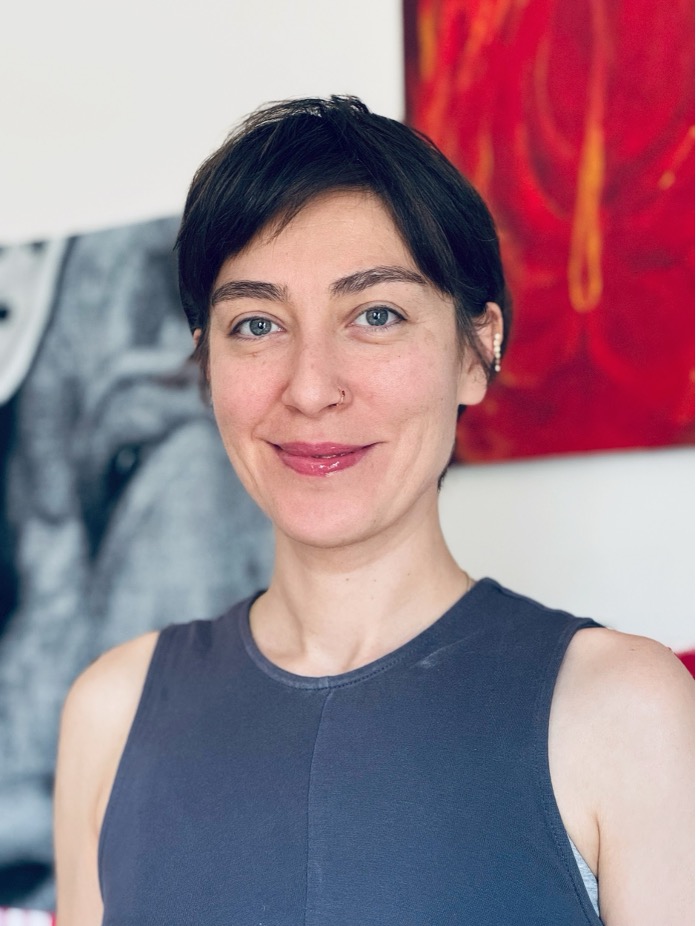Short Biography
NESLİHAN KOYUNCU BALİ – ARTIST
Slogan: “Choosing the VAVCD program was the best decision I made for my adult life at the age of 16. Throughout my career, I have benefited from every discipline the program offered.”
- Undergraduate: VAVCD, 2009
- Graduate: Master of Arts, Sabancı University, 2014

- During Undergraduate Studies: Took on various student jobs such as departmental photography, managing the Kasa Gallery website, and designing exhibition posters for a course with Alex Wong.
- Previous Positions: Project-based artist at the London-based advertising agency Wieden+Kennedy; co-founder of the agency It is Red with Sabancı University alumni Bora Bekiroğlu and Hürcan Yılmazer; co-founder of the video production company Düğme Film; project coordinator for the establishment of the 23.5 Hrant Dink Site of Memory at the Hrant Dink Foundation.
- Current Position: Not currently employed at a company; preparing for her solo exhibition in her own studio.
- Location: Istanbul, Türkiye
Short Interview
1. What exactly does your current work involve, and what does a typical day look like?
Every day, I go to my studio near my home and work on the pieces I’m creating for my solo exhibition. I work across various mediums, including interactive installations using Arduino-based coding, embroidery on fabric and paper, painting, and photography.
2. What was the most valuable contribution of your VAVCD education at SU to your professional transition?
Although I specialized in visual arts, I also took many visual communication design courses. Thanks to practice-based courses like motion graphics and 3D animation, I gained tools that could sustain me financially through visual production. This multidisciplinary education provided me with a career path alongside my artistic practice.
3. Did you enter this field directly after graduation, and how did your journey unfold?
After graduation, I first gained work experience doing creative work in agencies. I started my own company and worked as an art director on projects with partners from various disciplines. I then decided to specialize in art and began my master’s degree, continuing my video production work during that time. Later, I took a break from art to work in a position that gave me professional experience in the NGO sector. After a period of intense work, I entered a phase where I focused solely on art.
4. How did your research/creative production experience at SU reflect in your current position?
The biggest influence on my studio practice is the confidence I gained from a multidisciplinary education. Beyond my knowledge of traditional art methods, my ability to use any type of software without relying on others stems from this variety. This same foundation allows me to easily adapt to changing conditions, especially with the support of AI.
5. What was your favorite course in SU’s VAVCD program, and why?
I enjoyed all the practical courses, but the most impactful were the studio courses starting with VA 301. Having our own studio spaces, access to metal and wood workshops, and abundant material opportunities was a huge advantage.
6. What advice would you give to current undergraduate students?
I’d encourage them to think much bigger. You realize the full extent of the opportunities after graduation. If possible, art students should pursue a psychoanalytic-based project throughout their studies to deepen their work. I recommend regularly visiting exhibitions in the city and, if possible, attending biennials abroad—not only in Europe and America, but also exploring art scenes in the Global South. They should stay connected to life and follow current world developments rather than being immersed solely in art history.
7. What would you say to a student who is considering VAVCD but is unsure?
For those who choose this program with the goal of making money solely from art, I’d advise letting go of that expectation—there’s no guarantee in this field. However, it is possible to make art while acquiring different specializations, and SU offers a suitable environment for this. That’s why many successful artists in Türkiye have passed through this university. For those aiming to establish a name in contemporary art, the VAVCD program provides a strong starting point.
8. How did your VAVCD education make you stand out in job interviews?
In my last job interview, the employer was concerned about whether artists could complete a project in a fixed work environment. But thanks to the positive reputation of Sabancı University and my multidisciplinary background, I was seen as the most suitable candidate for a large-scale project.
9. Did your relationship with SU professors continue after graduation?
Always, with all of them. For me, this was one of the most valuable aspects of SU. Many opportunities—such as job offers, museum exhibitions, and international shows—came through the recommendations or support of my professors.